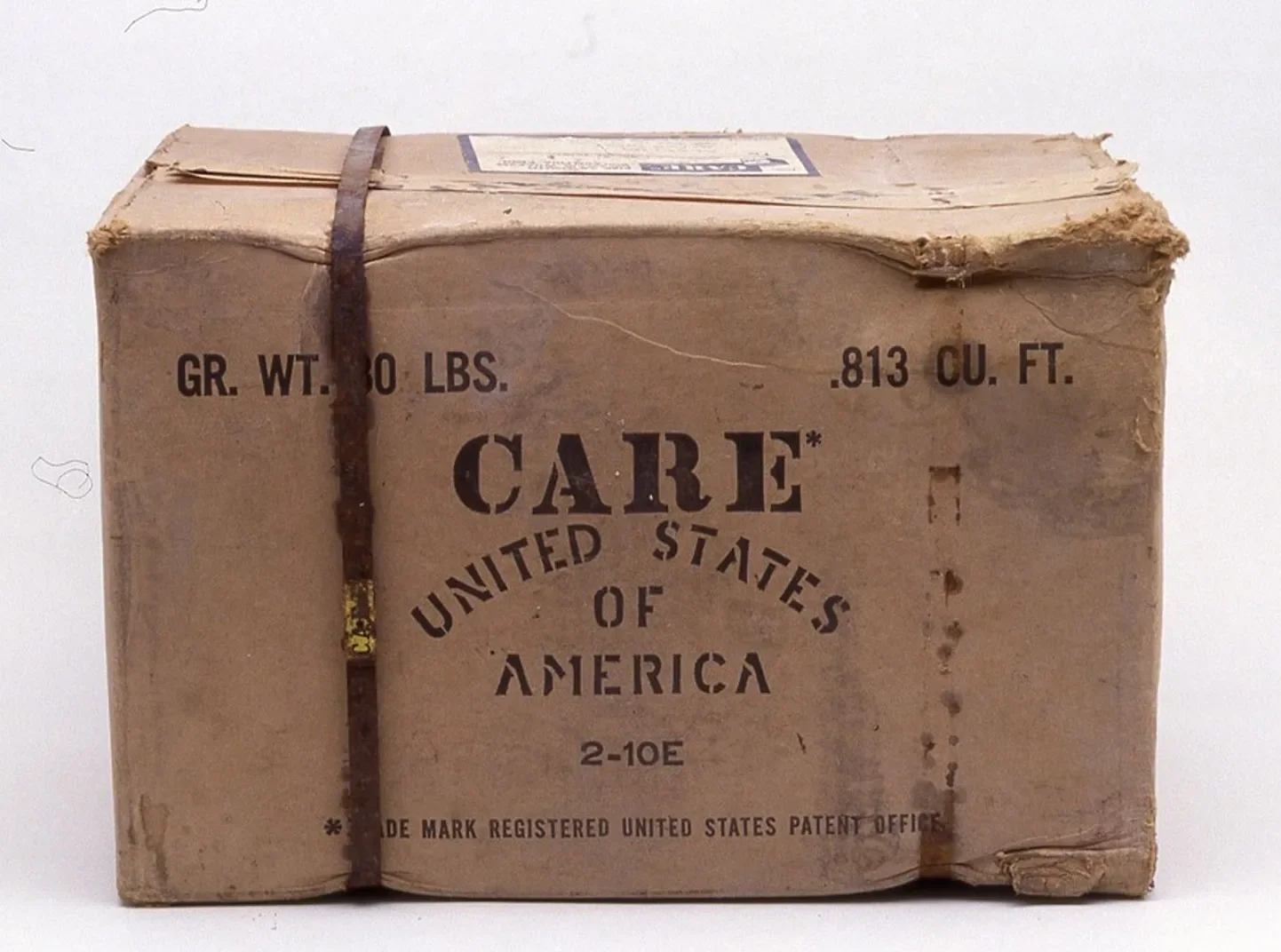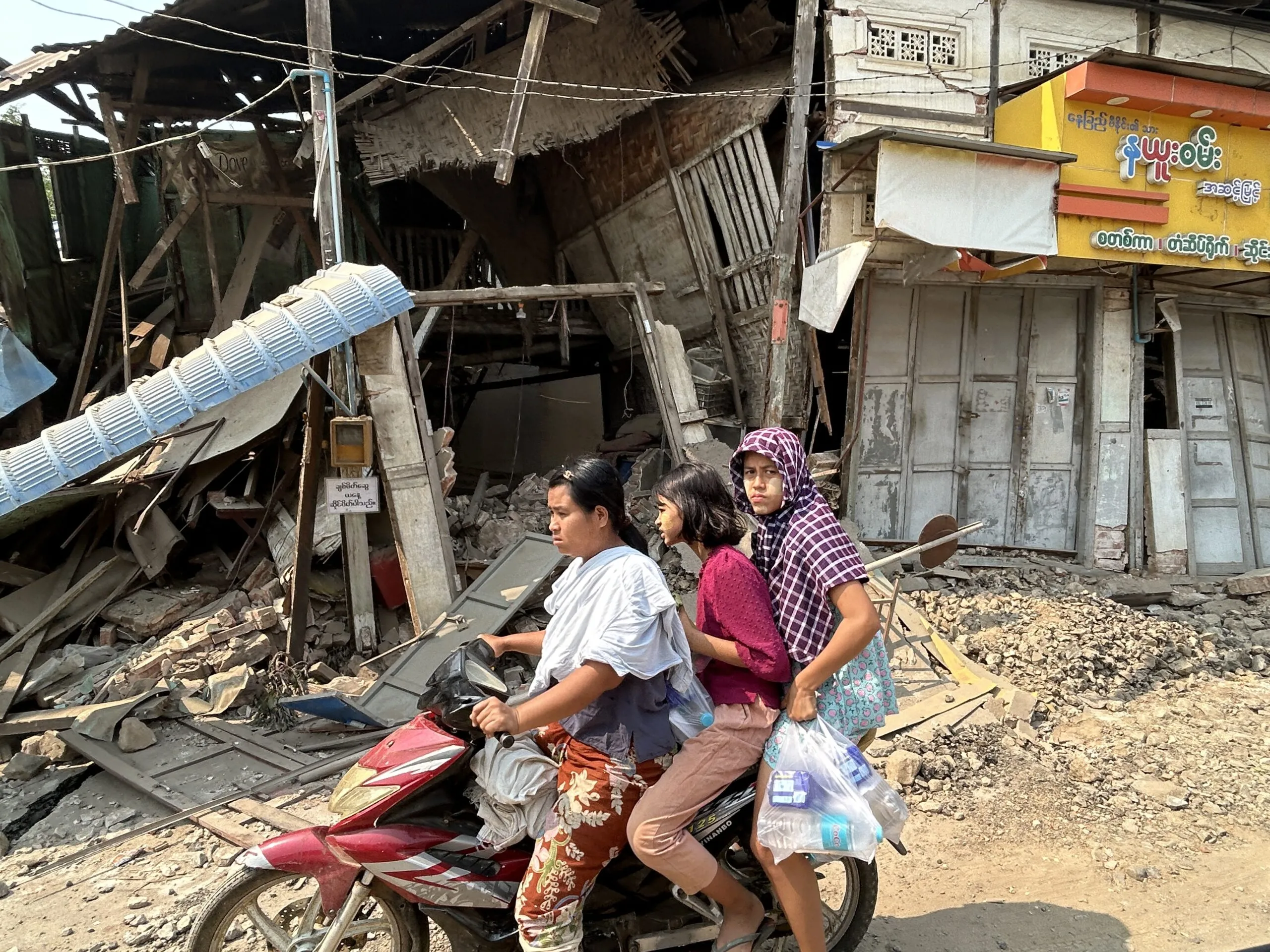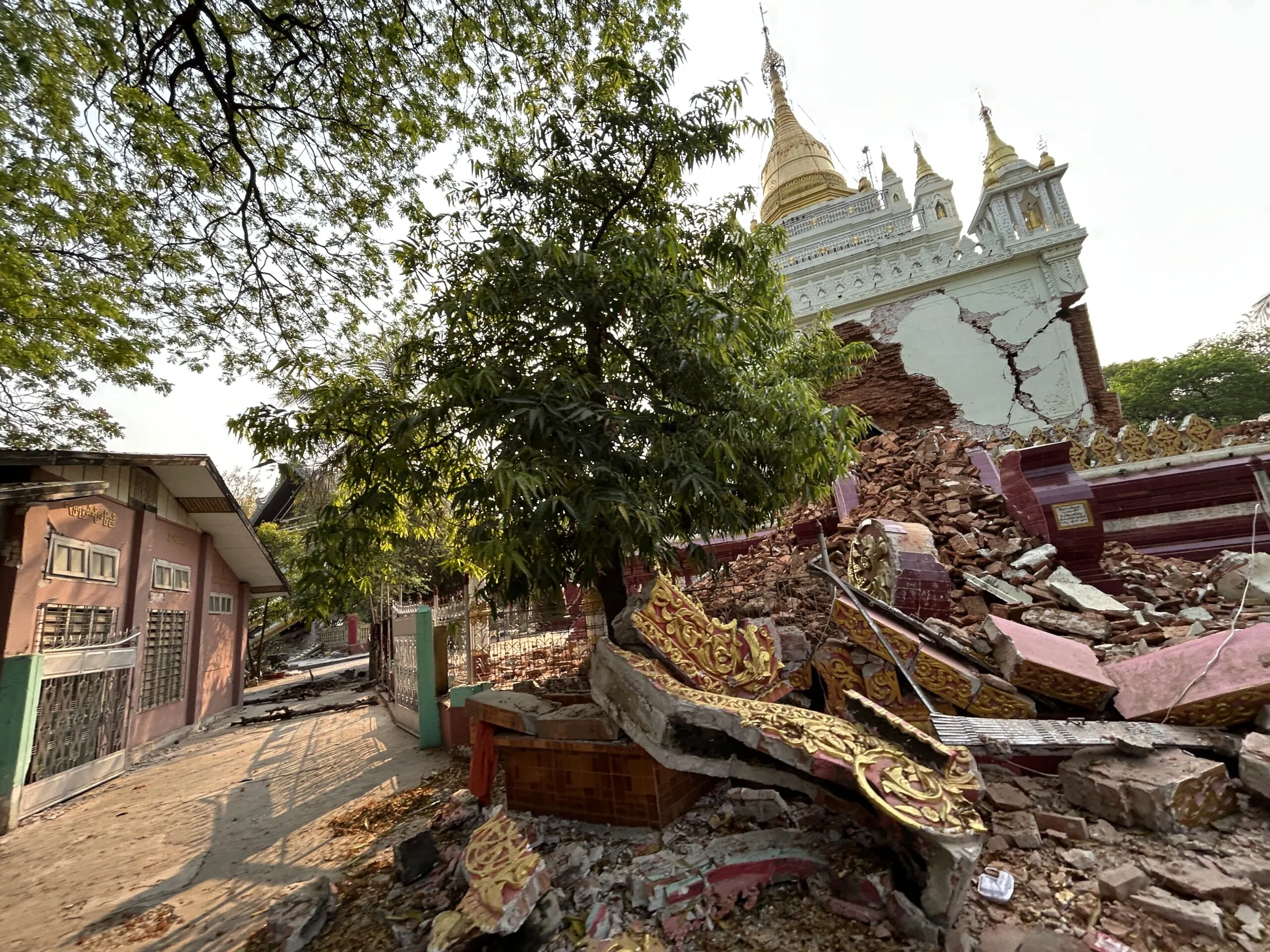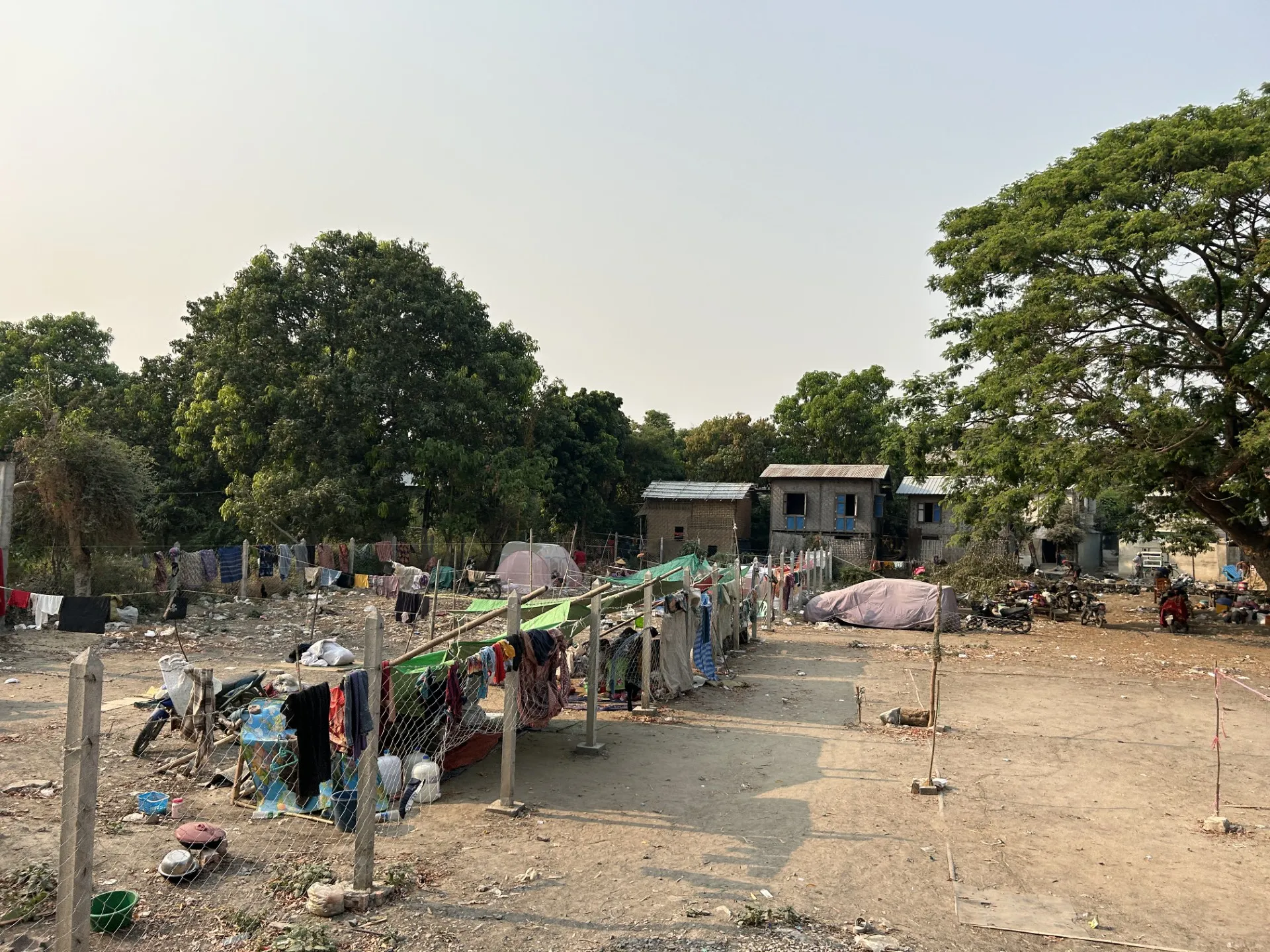Once the tremors stopped, Mai, a longtime volunteer with a CARE partner in Mandalay, heard screams from the collapsed house next door.
“We didn’t care about the earthquake anymore,” she told us. “We just ran to help.”
Despite her own already broken foot, Mai and her nieces, along with other neighbors, began digging through the rubble. They uncovered a woman caked in dust, her long hair matted with blood. Ignoring her own wounds, the woman begged rescuers to save her father who was still trapped beneath the wreckage.
“It was a close call,” Mai said. “He was bleeding and had a bad injury on his head. He was barely conscious when we pulled him out.”
As Mai and her nieces made their way back home, they believed the worst was over. But suddenly, a local church collapsed as they passed. Flying debris hit Mai’s arm hard enough to leave a bruise that still hasn’t healed. Just moments later, a nearby hill shifted and two parked cars began rolling down the slope, straight towards Mai and the girls. With her broken foot, Mai was already moving slowly. Her nieces pulled her out of the way just in time.
“If not for them, I could have died,” she said “It was horrible. We’ve never experienced anything like this.”



